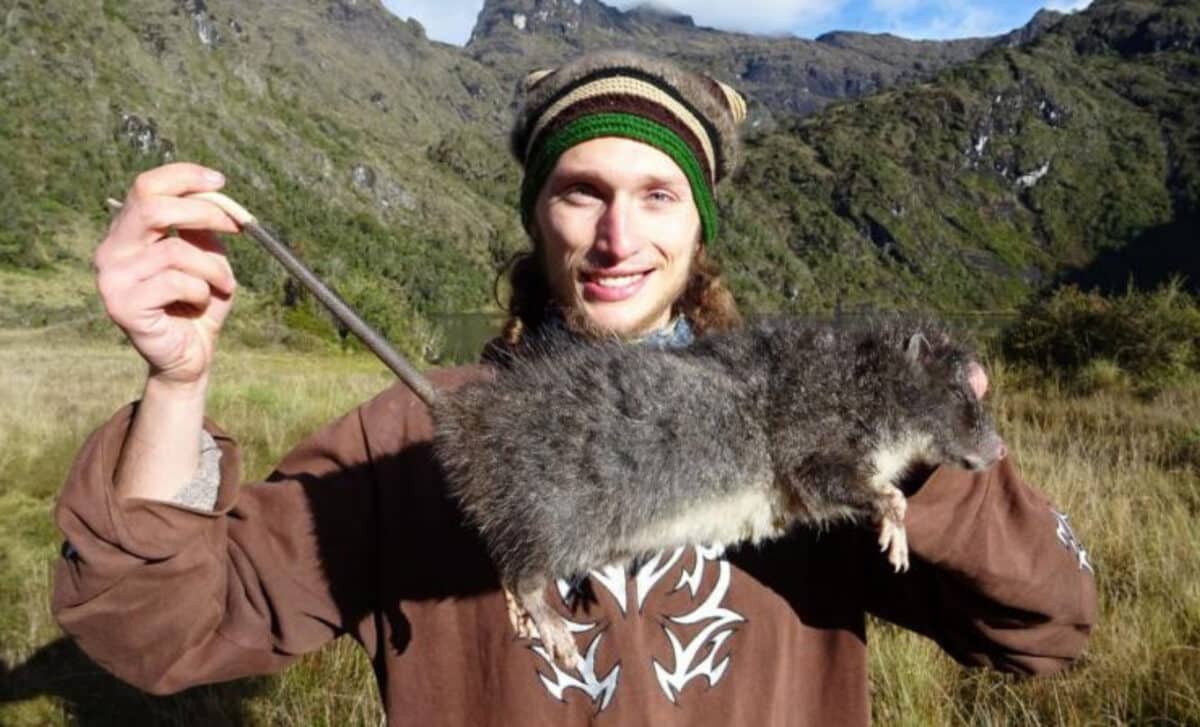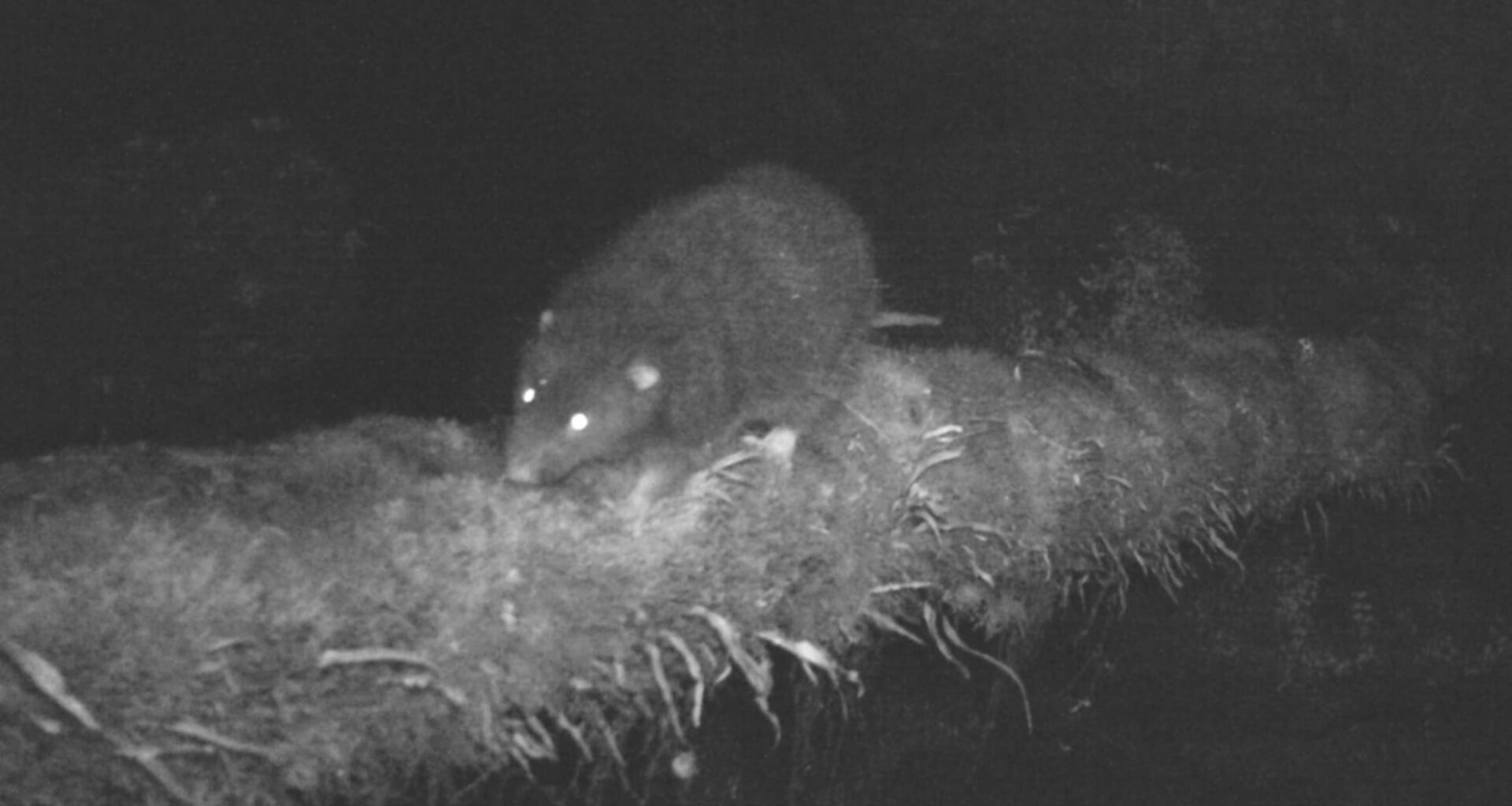For the first time ever, scientists have captured video evidence of the elusive Mallomys istapantap, a mammal locals have known for generations but which no one in the scientific world had observed in the wild—until now.
The rediscovery comes from a six-month expedition led by Czech doctoral researcher František Vejmělka, who ventured into the upper slopes of Mount Wilhelm, the country’s tallest peak. Assisted by indigenous hunters and braving extreme altitudes, Vejmělka documented the first living evidence of a species that had become almost legendary due to its absence from all scientific records since it was described in 1989.
The mammal, also known locally as mosak or “man-biter”, had acquired near-mythical status among researchers due to its massive size, distinctive appearance, and decades-long disappearance. Despite its formidable traits and being the largest rodent species in the Australasian region, its existence was unconfirmed until this field mission. Its survival not only adds to the region’s rich biodiversity but also highlights the critical role of indigenous knowledge in wildlife conservation.
First-Ever Sighting of a Living Mallomys Istapantap
High up at around 3,700 meters, Vejmělka and his local guides spotted a massive rodent rustling quietly through the ferns—bigger than a housecat, moving with surprising agility. Known for its thick, woolly coat and long tail, the Subalpine Woolly Rat is a nocturnal creature that had never before been filmed or studied alive. It measures up to 85 centimeters in length (tail included) and weighs nearly five pounds.
The footage, as reported by ZME Science, captures the animal foraging under the cover of night and retreating into high canopies and burrows by day. With a cone-shaped head, large dark eyes, rounded ears, and strong claws, the rat is clearly built for stealth and survival in these high-altitude forests. According to Vejmělka, its capture on film is a breakthrough: “If it weren’t for the indigenous hunters who accompanied me in the mountains and helped me locate the animals, I would never have been able to collect this data.”
His work also provided the first biometric measurements of male specimens, including the size of their incisors, structure of their fur-covered feet, and even the types of parasites found on their skin. None of this had been known before the expedition.
Hidden in Plain Sight Thanks to Local Knowledge
The indigenous communities living around Mount Wilhelm had always known of the mosak. While they lacked the tools to document it scientifically, their knowledge was key to the rat’s rediscovery. According to Vejmělka, these hunters acted not only as guides but as partners in the fieldwork, leading him to the animal’s habitat and tracking its nighttime activity.
Using this local expertise, the team navigated unmarked trails, misty forests, and steep terrain to reach the rat’s environment. Unlike the assumptions made by many researchers who thought the animal extinct, the rat wasn’t particularly elusive once the team knew where to look. It had simply been living in places few outsiders had ever gone.
In the course of his expedition, Vejmělka also identified 61 other species of non-flying mammals, mostly rodents and marsupials. Many had never been recorded before. The rediscovery of Mallomys istapantap serves as a reminder that New Guinea’s isolated highlands remain one of the least-studied ecosystems in the world.

Habitat Now at Risk From Industrial Interest
Though the woolly rat has survived undisturbed for decades, its future is far from secure. The upper elevations of Mount Wilhelm are now attracting the attention of mining companies eager to tap into the mineral-rich soils beneath the rainforest.
These development pressures could rapidly destroy the very ecosystem that has sheltered the animal for so long. Vejmělka hopes his findings will inspire both local communities and governments to reconsider land use in these regions. He suggests that showcasing the area’s unique fauna could shift the perception of locals from passive observers or hunters to active guardians of a fragile ecological heritage.
The fact that such a large and visually distinctive species remained undocumented for so long speaks volumes about how much remains undiscovered in the planet’s more remote corners. This rat, once considered little more than a rumor, now stands as a living symbol of the biodiversity we risk losing—not because it disappears, but because we fail to look in the right places.

